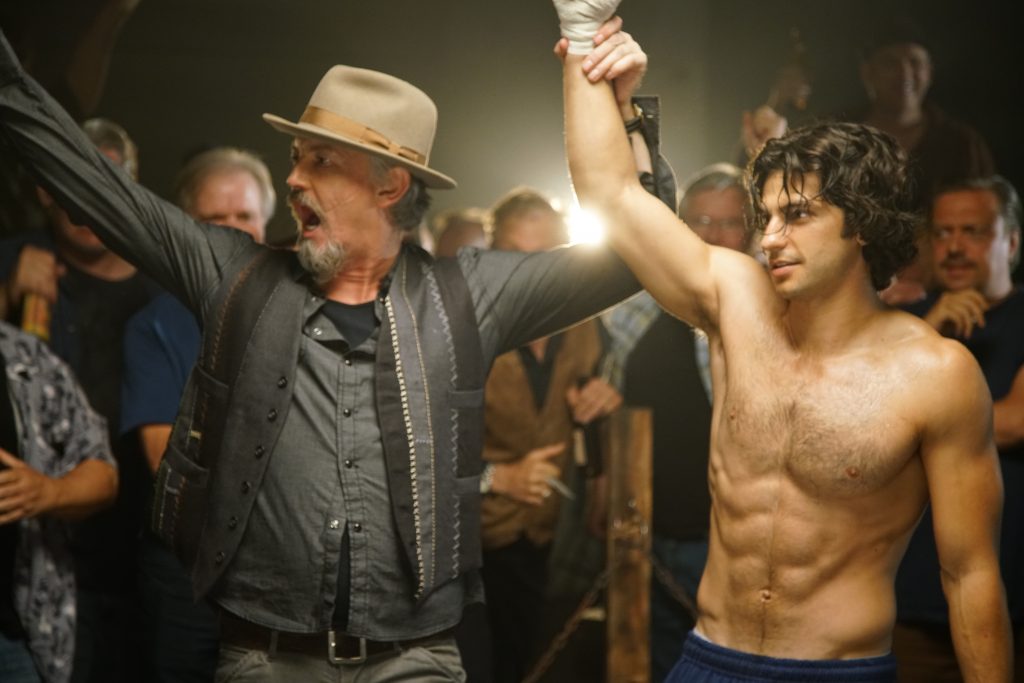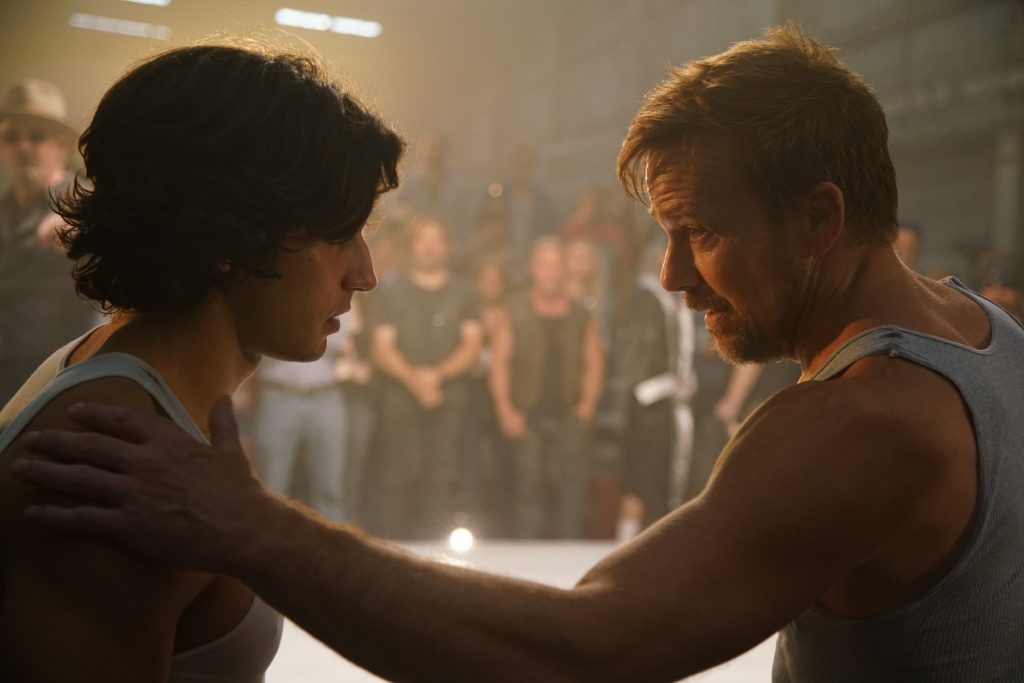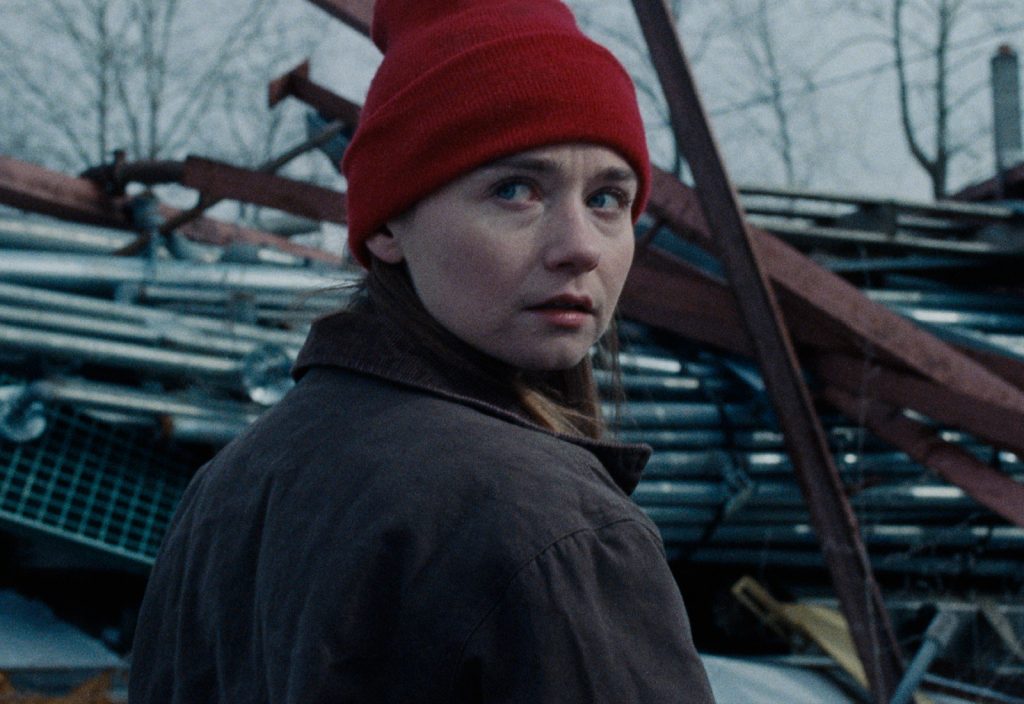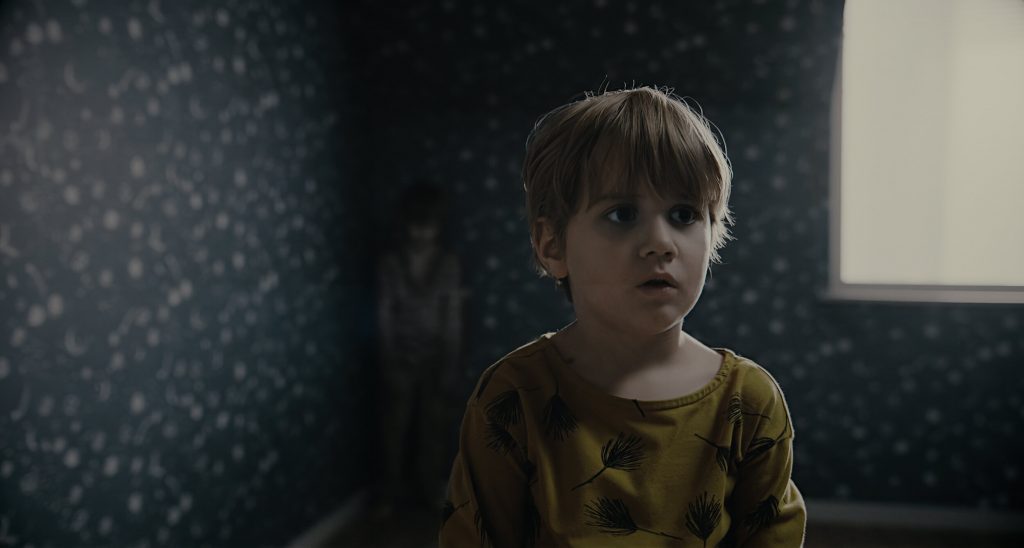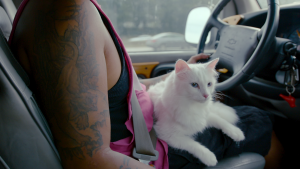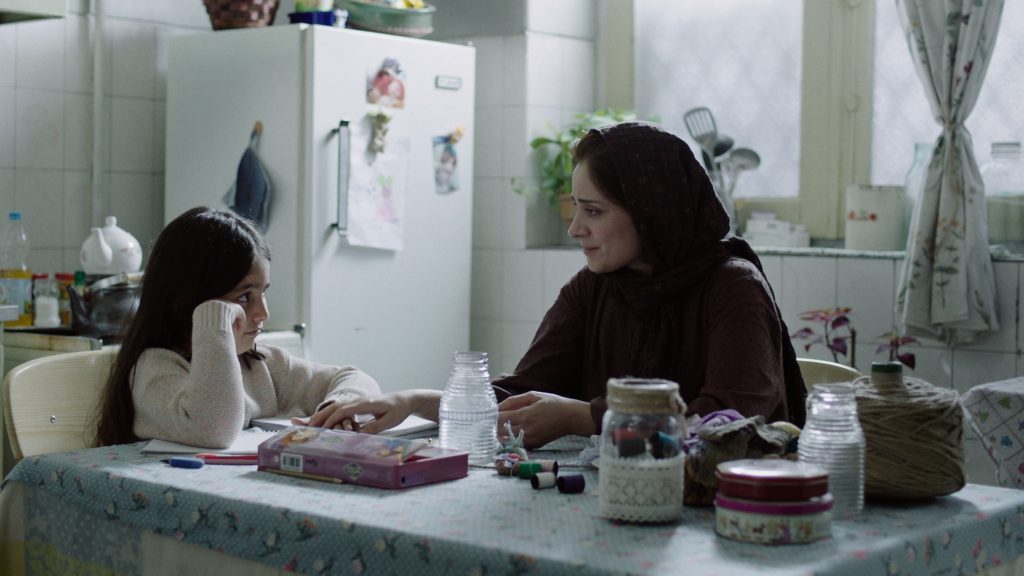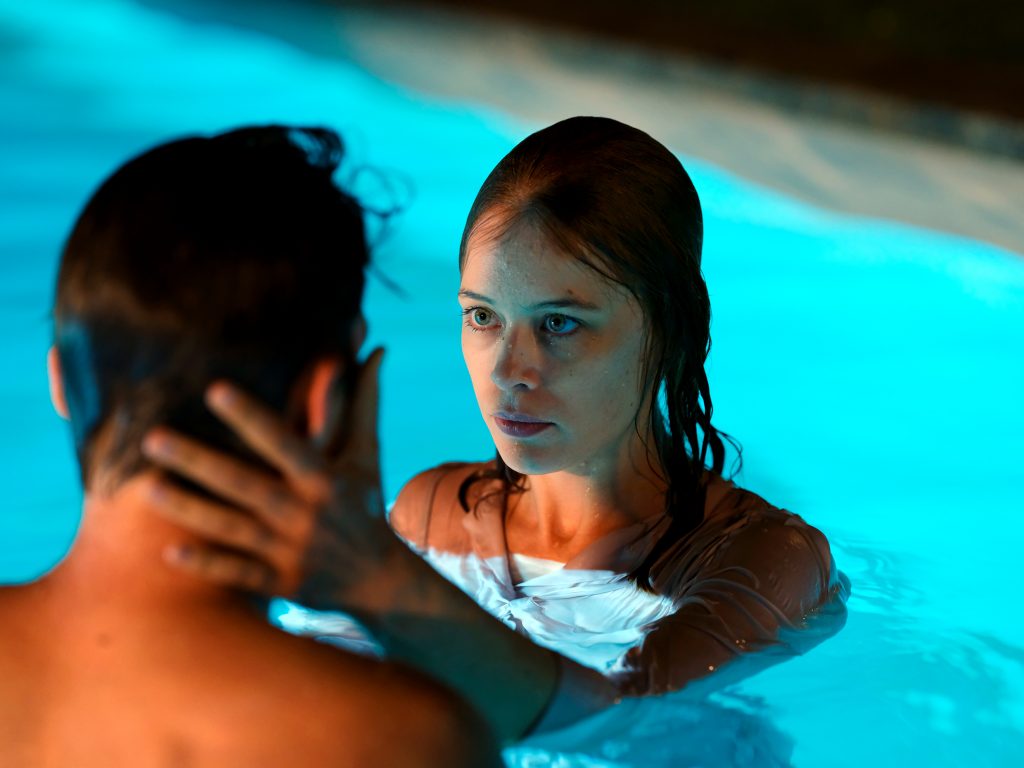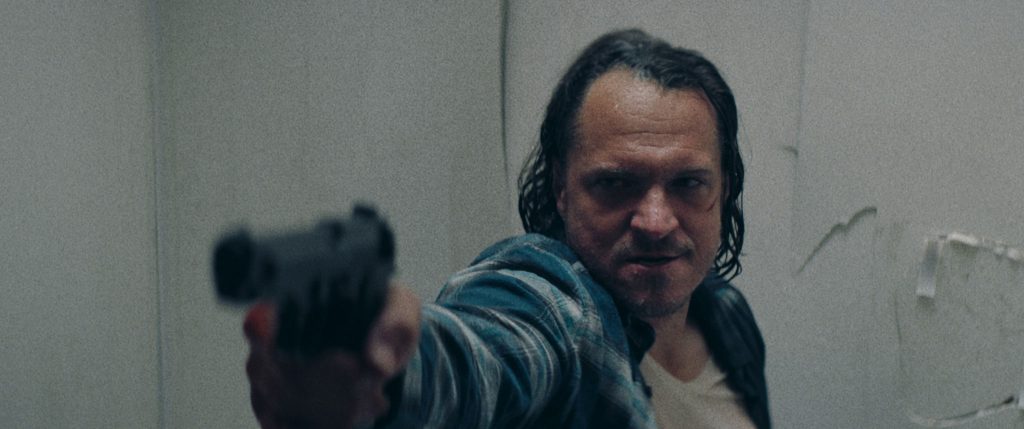July 10, 2021
by Carla Hay
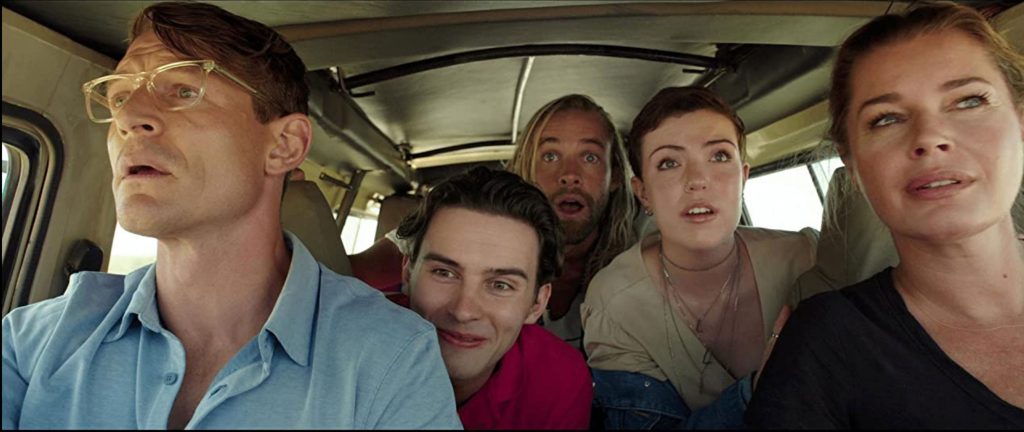
Directed by MJ Bassett
Culture Representation: Taking place in Kenya, the dramatic film “Endangered Species” features a cast of white Americans and black Africans (with a few Asians) representing the working-class and middle-class.
Culture Clash: An American family’s safari vacation in Kenya turns into a nightmare when they’re stranded in a deserted area and become the targets of wild animals and other dangers.
Culture Audience: “Endangered Species” will appeal primarily to people who like watching moronic “family in peril” movies.
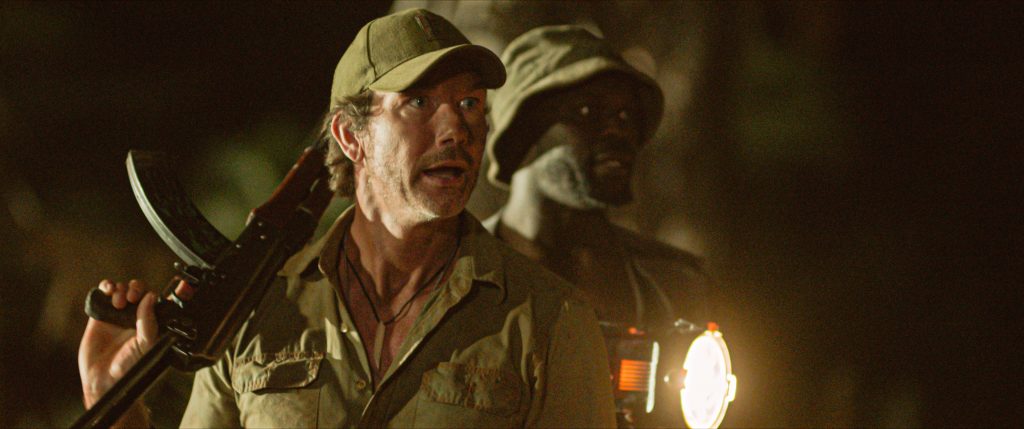
“Endangered Species” is an example of what not do when going on a safari and what not do when making a movie thriller about it. The film’s intended preachy message about poaching is overshadowed by the idiotic story. “Endangered Species” wants to have a social conscience about saving animals’ lives, but it makes the human characters so dimwitted, the humans put their own lives in danger and barely know how to save themselves. The movie makes a genuine effort to be suspenseful, but that effort is wasted on a poorly conceived plot, low-quality visual effects and subpar acting from some of the cast members.
“Endangered Species” was directed by MJ Bassett, who co-wrote the movie with her daughter Isabel Bassett, a co-star in “Endangered Species.” Isabel Bassett’s previous acting credits were two other films directed by MJ Bassett: 2009’s “Solomon Kane” and 2020’s “Rogue.” It’s proof that nepotism is alive and well but isn’t always beneficial. Isabel Bassett’s questionable acting skills in “Endangered Species” (including letting her British accent slip through when she’s supposed to have an American accent) lowers the quality of this already tacky film.
In “Endangered Species,” the Halsey family are Americans who are supposed to be having a fun-filled vacation in Kenya. They’ve arrived just outside of Amboseli National Park to take a safari. The people in the Halsey family tourist group are:
- Jack Halsey (played by Philip Winchester), an arrogant “control freak” patriarch who always thinks he’s the smartest person in the room. Jack is a high-ranking executive at an unnamed oil company, which has recently put him on an unpaid leave of absence, pending an investigation into a major oil spill on the Dakota pipeline. The oil spill happened under Jack’s supervision.
- Lauren Halsey (played by Rebecca Romijn), Jack’s wife of 16 years. She’s a diabetic who used to be a medical doctor, but she left her career behind to become a homemaker. She’s a lot more nurturing and more patient than Jack is. Jack and Lauren each has a child from a previous relationship. It’s implied that Jack’s and Lauren’s exes haven’t been involved in raising these children.
- Zoe Halsey (played by Isabel Bassett), Lauren’s 18-year-old daughter/Jack’s stepdaughter. Much to Jack’s dismay, Zoe has recently dropped out of MIT and is now working at a vegan coffee shop. Lauren is more understanding about it and thinks Zoe has a right to find her own path in life and make her own decisions.
- Noah Halsey (played by Michael Johnston), Jack’s son/Lauren’s stepson, who’s about 16 or 17 years old. Noah has recently come out as gay, which is something that Jack has a hard time accepting.
- Billy Mason (played by Chris Fisher), Zoe’s hippie boyfriend, who’s about 10 years older than Zoe. This age difference bothers Jack, who disapproves of Billy because Jack thinks Billy is a bad influence on Zoe. Jack also didn’t really want Billy on the trip, but Zoe invited Billy without checking with Jack first.
When the Halsey party travels by a small private plane to Kenya, there’s some stereotypical family bickering. Jack would prefer to have a relaxing vacation, while Lauren wants a more activity-oriented trip. She tells Jack their previous vacations where they just sipped drinks by a beach were too boring for her. “We want an adventure,” she reminds Jack. He replies, “I don’t like how this family has become a democracy all of a sudden.” Lauren says, “It was a velvet coup, honey. You never noticed.”
It won’t be long before Lauren will have a real reason to be annoyed with with Jack. After they check into their hotel resort lodging in Kenya, she finds out about Jack being suspended from his job, when he should have told her earlier. Because he currently has no income, an embarrassed Jack tells Lauren that they can’t afford many of the things that he promised that they could do on this trip. He tries to convince her that they don’t need to worry about money, but Lauren doesn’t really believe him.
Meanwhile, Jack is the type of parent who is overly critical of his kids, who can never do enough to please him. Zoe is particularly resentful of Jack, and they clash with each other the most on this trip. Even though Jack has raised Zoe since she was a toddler, she has recently refused to acknowledge that he’s her father. She’s stopped calling him Dad and now calls him Jack. It’s a snub that really bothers Jack.
When the Halsey party members arrive at their lodging, they meet a fellow American who’s hanging out in the lobby area with some locals. The American’s name is Mitch Hanover (played by Jerry O’Connell, Romijn’s real-life husband), who is some type of park ranger. Mitch says that he patrols the area to be on the lookout for poachers.
And what do you know, just as the Halsey party arrives, they happen to see an all-female group of Kenyan law enforcement officials dressed in military fatigues drive up with a group of poachers who’ve been arrested. Mitch explains that the people responsible for busting poachers in this area all happen to be women. It’s the first clue that this movie is trying to pander to a certain political agenda, by going overboard with unrealistic scenarios, just so the movie can look politically liberal and “woke.”
Jack pre-paid for the vacation, but because he couldn’t afford the deluxe vacation package, he and the rest of the people in the Halsey party cannot go on the guided safari tour as part of the package. The safari leader tells Jack that he’s more than welcome to do a separate, self-guided tour with his family. It’s another huge unrealistic aspect of the movie, because no reputable hotel or safari company would allow a group of tourists to have an unguided safari in the wilds of Africa.
But there would be no “Endangered Species” movie if it didn’t have this ludicrous concept. Jack doesn’t tell his family the real reason why they can’t go on a safari with the rest of the tour group. Instead, he lies to them and says that he took the option for them to have a self-guided tour because it will give them more freedom. Although a few people in the family express doubts about how safe it would be to do a safari on their own, Jack dismisses any fears and says that they wouldn’t be allowed to do a self-guided tour if it weren’t safe.
Zoe has brought bottled water for this safari trip. Because she’s a hardcore environmentalist, she has refused to bring water in plastic bottles, so the water is in glass bottles. And it’s that this point in the movie that you know those glass bottles are going to get broken when the Halsey family inevitably gets stranded in the desert. Lauren’s blood sugar levels have been running high, so you know exactly what that means in the inevitable race against time to get help.
And so off the Halsey party goes to this doomed safari, with Jack driving their rented van. They go without looking at a map, and there’s no sense that they’ve gotten any training in survival skills. In fact, “no sense” are the operative words for this entire movie, as these irresponsible tourists make one bad decision after another when they get trapped in a deserted area.
When their van gets to a checkpoint to enter Amboseli National Park, the guard makes them wait because the Halsey party doesn’t have the approved paperwork to go on a safari. Jack is determined to go on this safari so he can look like a heroic adventurer to everyone. Jack starts arguing with the guard to let him and his group through the checkpoint.
Just then, the guard is distracted because another group of tourists is causing a ruckus. Jack uses that distraction as an opportunity to barrel through the checkpoint barrier and drive quickly into the park without getting caught. Although some of the security guards give chase in their cars, Jack manages to lose them by going off the beaten path into a deserted area.
And that’s why viewers won’t feel much sympathy for Jack when he gets lost and can’t find his way back to the main road. At first, no one panics over it because there are no dangerous animals in sight. There’s also plenty of food and water to keep them comfortable for the entire day.
And then, they see a mother rhino with a baby rhino. These tourists start “oohing” and “aahing,” as they take pictures from the van. But they’re too close for this mother rhino’s comfort, and she charges angrily at the van, and rams it hard several times, thereby tipping the car over on its side before running off with her baby. In the mayhem, Jack injures his leg, and Zoe dislocates her shoulder.
There’s enough damage that everything breakable in the van has been broken, including Lauren’s diabetic supplies and the glass bottles holding the water. The van is too damaged and won’t start. And, of course, their phones can’t get any signals. Meanwhile, these dumb tourists have a map, but they have no idea where they are in the park, since they drove off into a deserted area that isn’t near the main road.
There’s some back-and-forth arguing over whether or not they should stay in the car and wait for help or venture out and look for help before it gets dark. Jack is adamant that they stay in the car because he’s certain that other people will come along and eventually find them. He’s also concerned about being attacked by more wild animals and thinks the car will at least give them some protection. However, Lauren could go into a diabetic coma if she doesn’t get insulin soon, which gives more urgency to the idea of walking somewhere to get help.
While they’re trying to figure out what to do next, that’s when some hyenas appear. The rest of the movie goes exactly how you think it might go when people make more stupid decisions. There’s an inevitable part of the movie where some members of this tourist party get separated from the others. And there are more animal attacks in scenes where the visual effects don’t look convincing.
The wild animals aren’t the only dangers encountered in this trip from hell. There’s a plot twist in the last third of the film that is not surprising at all. (The trailer for “Endangered Species” reveals this plot twist.) It leads to a ridiculous, badly acted showdown where the movie, which was already terrible, goes off the rails to the point of mindless oblivion. Romijn and Johnston make attempts to portray believable characters, but all the other stars in the cast act like annoying caricatures.
The best things that can be said about “Endangered Species” are that there are some nice scenic outdoor shots of Kenya, and the movie tries to bring attention to the tragedies and injustices of poaching. It’s too bad that “Endangered Species,” which has a moralistic message about how humans should respect nature, is ruined by humans who don’t respect good filmmaking and don’t respect viewers’ intelligence.
Lionsgate released “Endangered Species” on digital and VOD on May 28, 2021, and on Blu-ray and DVD on June 1, 2021.

